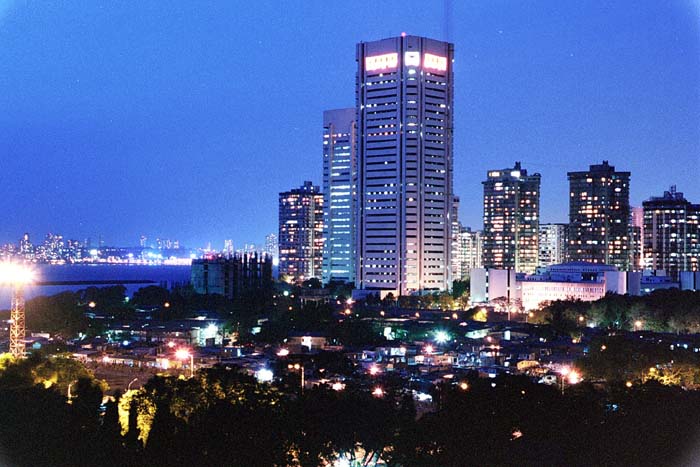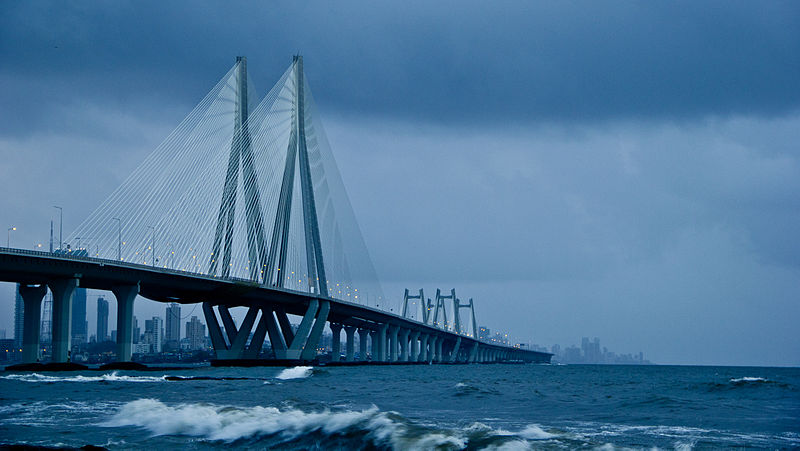Even in the present scenario, when planning has got a bad name and the Planning Commission has been disbanded, there is certainly a role for it, even at the level of cities. Without an overarching vision, how does one decide on what priorities a city should have? Mumbai is no exception and has just been belatedly delivered the draft 20-year development plan (DP) for the city proper, from 2014 to 2034.
It will now be thrown open to public scrutiny and the Brihanmumbai Municipal Corporation (BMC) will supposedly incorporate some of these suggestions. Actually, in a welcome departure, the authorities did invite citizens and associations to public meetings before the plan was drafted. However, as often happens in such deliberations, the “planners” merely go through the motions of inviting public suggestions, and then carry on regardless of these.
As it is, the BMC lacks any planning skills worth the name. It is excessively rooted in departmental executive bodies which seldom coordinate their functions. Mumbai has 17 different government agencies, often working at cross-purposes. Earlier, the state government had the Mumbai Metropolitan Region Development Authority (MMRDA), which was the apex planning agency, but its powers have been whittled down by the day.
It is now little less than a “develop and sell” body which acquires or reclaims land – a highly scarce and expensive commodity in the commercial capital – and sells it to developers. For this reason, it is the one cash-rich agency in the city, having made a fortune on such areas as the new central business district of Bandra-Kurla in the suburbs.
The MMRDA’s planning functions have been taken away by bodies like the Maharashtra State Road Development Corporation, which built the 50-odd fly-overs and the iconic Bandra-Worli Sea Link. It decides on what to build and where, when it is really only an executing agency.
The MMRDA has been trying to get a foot in the door of big-ticket projects, like the coastal road from Nariman Point in the southern tip to Kandivli in the northern suburbs, but has been denied this.
The draft DP mentions that previous exercises proved futile because they were overtaken by developments. In particular, the previous plan, from 1996 to 2011, underestimated the population growth, which obviously altered all the parameters employed in the exercise and rendered it futile.
The planners were very gung-ho the last time around. “Greater Mumbai has a very significant role to play not only in contributing to the national economy, but also in facilitating integration of the country’s economy with the rest of the world,” they said.

Mumbai's skyline at night. Pic: Wikimedia
“With its premier position as the country’s financial capital, its leadership in the country’s international trade, its strategic location with respect to the global market centres, and its ability to provide a wide range of technical, professional and business services, Greater Mumbai has the potential to emerge as an international city, fostering growth of financial and business services and hi-tech export-oriented industries,” added the optimistic planners.
Now, somewhat soberly, the draft cites how things have changed since then: “Given uncertainties in the global market and various technological innovations that are likely to occur but not known at present, it is not possible for planners to be prescriptive and deterministic about development 20 years ahead of time.”
In other words, Mumbai’s bid to become a “world-class city” – a constant refrain of politicians and corporate think-tanks like Mumbai First – has come a cropper. If one was to sum up the situation pithily, one can quote the eminent Mumbai architect and planner, Charles Correa: “Mumbai is a wonderful city, but a terrible place!”
Ignoring demographics
One of the biggest changes that the city is facing is the deceleration in population growth. From a whisker under 12 million in 2001, Mumbai had 12.48 million in 2011. In this decade, therefore, the population has only risen by a little less than half a million people or 3.87 per cent. Between 1991 and 2001, the population increased by a fifth.
By 2034, the estimate is just under 14 million, which indicates the flattening of the curve. Thus, due to the decline of employment, migration has tapered off and natural increase now accounts for the major chunk of the bulge. The DP does not address the fall in employment: eight out of every ten jobs in the city are in the so-called informal sector, with no security.
Taller isn’t necessarily better
By far the most worrying feature of the DP is the “paradigm shift” in the floor-space index (FSI), the ratio of buildable area in relation to the size of a plot. The draft states that it was introduced in the 1991 DP to contain the city’s growth and density but didn’t succeed in doing either. It also states that the FSI was treated as an entitlement, whereas it should be regarded as a maximum limit that can be attained subject to other conditions.
Since 1991, the FSI for the island city, which comprises 100 sq km of the 485 sq km of the city, has remained 1.33 and 1.00 in the suburbs. This norm has been most often honoured only in the breach and there are a host of exemptions and other incentives which can take it higher. Five-star hotels and international convention centres, for example, obtain an FSI of 4.0, which explains why so many builders vie for such projects.
Now the DP recommends a flat 2.00 throughout the city. In nearly 60 per cent of the city’s area, it can be 3.5. In areas well-served by public transport, like railway stations and the Metro, accounting for 32 per cent of the area, it can rise to 5.0.
In the immediate vicinity of major railway stations in central business districts – like Churchgate in south Mumbai – and other employment nodes, accounting for 4.55 per cent of the area, it can range from 6.5 to 8.00. This maximum limit can also be reached in employment nodes, comprising just 0.5 per cent of the area.
This is simply the “Manhattanisation” of Mumbai, rising skywards to provide homes and offices. The obvious constraint is the lack of infrastructure to support such reckless growth. Already, the city groans under the weight of having to provide services such as water, sanitation and transport: high-rises have already come up in the most congested parts of the city, without access to these.
A former Municipal Commissioner, Sharad Kale, has put it succinctly by observing that in the past higher FSI did not translate into better housing for all residents of the city. “High FSI is a gift for the few, the burden of which is borne by all,” he said.
The DP simply does not address the problem of slum dwellers. It estimates their proportion at 42 per cent, whereas most other sources place it between 55 and 60 per cent. By definition, the higher the skyline, the greater the cost of apartments and it will strain credulity to imagine that the homeless can be housed in skyscrapers.
The commute conundrum
The other major lacuna in the DP is the emphasis on “transit-oriented development”, creating major growth centres northwards in the peninsula of Mumbai, without tackling the problem of transport itself. It sets much store by the Metro but experts show that it can never prove to be a mass transit system. Only the suburban railways, accounting for 7 million trips a day, can serve this purpose. The BMC can shrug off responsibility since the railways are run by the Centre.
The next big carrier is the BMC’s bus service, BEST, once revered as the finest in the country, with 5.5 million trips. Together with the railways, these modes account for three-quarters of all trips made by motorised transport. However, the DP doesn’t emphasise the need to increase public transport and only proposes more roads, including the controversial Rs 10,000-crore coastal road; this, at a time when countries all over the world are trying to stop cars from entering the central business district.

The Bandra Worli Sea Link, Mumbai. Pic: Sourabh Sinha/Wikimedia
There is hardly a mention of the Bus Rapid Transit System (BRTS), where there are reserved lanes in the centre of arterial roads for buses to ply at regular intervals. This costs a fraction of the expenditure on coastal roads and serves the public, not private, interest.
The argument that Mumbai is too congested to permit such an innovation is wholly false: the BRTS works best in such conditions and privileges buses over cars. The BMC has toyed with introducing the system but is swayed by such anti-people projects as coastal roads and sea-links where buses don’t ply.
RIP, breathing space
A final problem in the DP is the proposal to increase the open space per capita from 1.24 sq metres per person at present to 2 sq metres. One of the ways in which this is sought to be achieved is by reserving 10-20 per cent of space open in any building project. However, as the experience with the 242 hectares of mill land in the city shows, such reservation usually ends up in private hands, including parking in gated complexes.
A sure sign of the DP’s intent is the proposal to convert 1,600 hectares belonging to the Aarey Milk Colony – one of the only two green lungs left in the city – for development as an “emerging growth area and opportunity”. Activists who have been agitating against the proposed road cutting through this verdant area are up in arms against this dereservation.
There is not even a mention of the 730 hectares of derelict port land in the island city now open for reuse, hopefully benefiting the public.
The DP’s recommendations, if implemented, can well prove to be the final nail in the city’s coffin. High-rise development will serve no one but builders, politicians and venal bureaucrats.
























